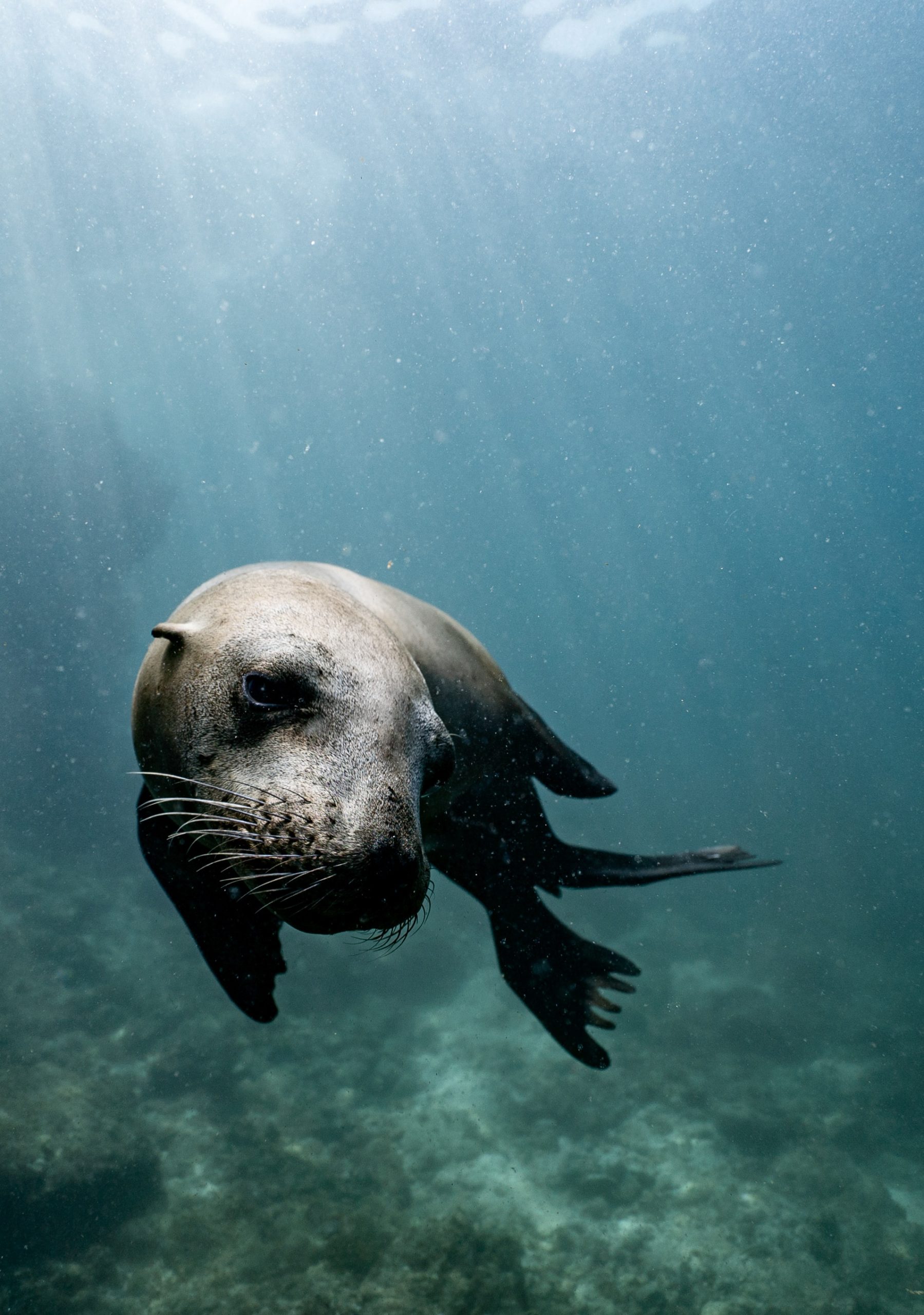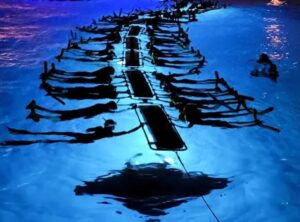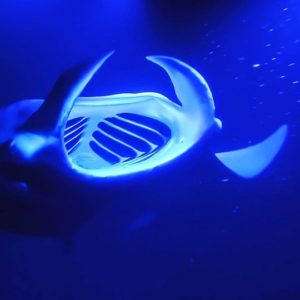The Hawaiian monk seal is one of the many beautiful creatures of Hawaii. The Marine Mammal Commission has interesting information on this endangered species.
The Hawaiian monk seal is the most endangered pinniped in U.S. waters and one of the most endangered seals worldwide. Most Hawaiian monk seals live in the remote Northwestern Hawaiian Islands (NWHI) where their numbers have declined since the 1950s. Since the 1990s, a small population in the main Hawaiian islands (MHI) has increased significantly in size and now represents 20% of the species’ total population size.
The name monk seal is believed to come from the resemblance of folds of skin around the neck to the cowl of a monk’s hood. The Hawaiian name for the monk seal is Ilio-holo-i-ka-uaua, meaning dog running in the rough seas. Monk seals feed primarily on a wide array of small fishes, squids, octopuses, and crustaceans, found on the sea floor on sand flats, outer reef slopes, offshore banks and coral reefs. The dives of most seals are to 60 meters or less, although some seals have been recorded diving to depths of more than 500 meters.
Species Status
Hawaiian monk seals occur almost exclusively in the Hawaiian Archipelago, with occasional sightings at Johnston Atoll. Most monk seals are found at eight primary sites: Necker Island, Nihoa Island, French Frigate Shoals, Laysan Island, Lisianski Island, Pearl and Hermes Reef, Midway Atoll, and Kure Atoll) in the remote, largely uninhabited Northwestern Hawaiian Islands (NWHI). All of these islands are now part of the Papahānaumokuākea Marine National Monument. Along with the Mediterranean monk seal, the Hawaiian species is one of only two remaining monk seal species. A third species, the Caribbean monk seal, went extinct in the 1950s.
Hawaiian monk seals were apparently eliminated from the main Hawaiian Islands (MHI) after the first Polynesians arrived. In the late 19th century, hunting in the NWHI pushed the species to the brink of extinction. Their numbers had rebounded substantially by the late 1950s. Subsequently the population declined again over the next 50 years to a level 70% lower than that of the late 1950s. This decline is not fully explained but was likely due to multiple factors, including variable oceanographic productivity and human disturbance. Recently developed methods allow for estimating the total population of Hawaiian monk seals throughout their range for the first time (Baker et al 2016), revealing that the number of monk seals increased between 2013 and 2016; a hopeful sign.
Threats to the species differ substantially between the NWHI (where they are now well protected from direct human interactions), and the MHI (where human-related impacts pose a significant and growing challenge) (Baker et al. 2011). In the NWHI, the major threats include entanglement in marine debris (particularly derelict fishing gear), starvation due to limited prey availability, shark predation, attacks on pups and females by aggressive adult male seals, and loss of pupping beaches due to rising sea levels. In the MHI, threats include fishery interactions (hookings and drowning in gillnets), toxoplasmosis (an infectious disease spread by feral cats), and intentional killing by people.
The National Marine Fisheries Service (NMFS) is the lead agency responsible for monk seal research and management but it relies on partnerships with other agencies (e.g., the State of Hawaii Division of Aquatic Resources, U.S. Fish and Wildlife Service, Office of National Marine Sanctuaries, U.S. Coast Guard, and U.S. Navy), non-governmental groups (e.g., The Marine Mammal Center, Hawaii Marine Animal Response), and volunteers. NMFS adopted a recovery plan for Hawaiian monk seals in 1982 that was updated in 2007, and designated revised critical habitat in 2015.
In January 2016, NMFS released a new Hawaiian Islands Monk Seal Management Plan. The management plan is an important step toward successfully managing the MHI monk seal population, preparing to address emerging challenges, and fostering co-existence between humans and seals.









